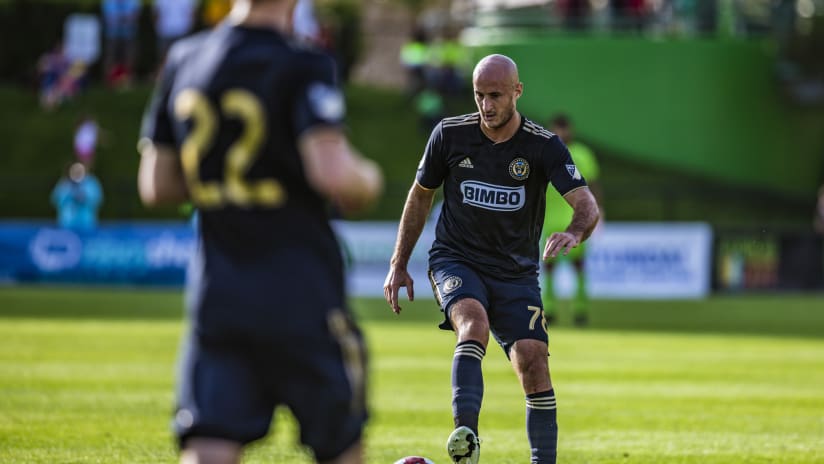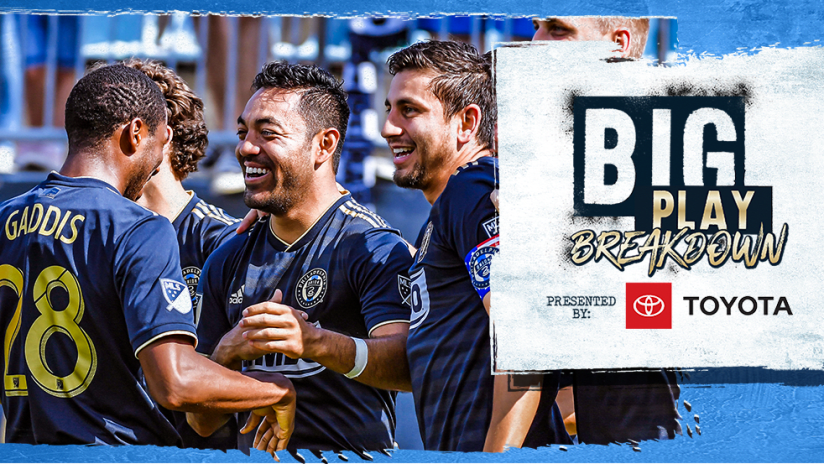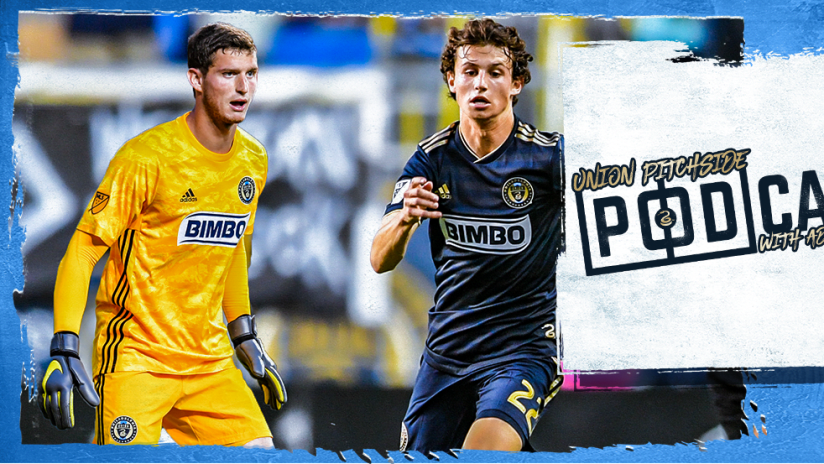MLS can be a wild league. Case in point: Real Salt Lake looked like one of the best teams in the country during the second half of 2017. They signed players in positions of need, and they retained the core that helped lead a failed charge to a playoff berth. Matt Doyle thought they were a dark horse contender for the title.
Now it looks as though Mike Petke will need to engineer another stunning turnaround just to keep the Claret and Cobalt relevant. Philadelphia Union showed one weak point all match, and for all they pushed, RSL rarely got into the box working up the channel between Keegan Rosenberry and Mark McKenzie. In contrast, the Union almost immediately exposed their opponents’ defensive flaws: A gap behind the midfield that leaves Kyle Beckerman tending a plot that runs the length of the pitch, an inability to track runners out of midfield, and absolutely no means of progressing the ball to a dangerous front four if they don’t do it directly after a turnover.
Union attack RSL defensive flaws
That final issue, transition defense, was a strong point for the Union after a wide-open start to the match. The key for Philly? Well, just don’t commit turnovers that can lead to transitions. On the left, you can see the Real Salt Lake defensive chart over the first 20 minutes of the match. They regained possession five times in the Union half, and had two more opportunities to do so (the red triangles are failed tackles). On the right is the RSL defense over the remainder of the first half.
 |  |
|---|
Not only do they fail to create any real pressure on the Union back line, they do not create pressure anywhere on the pitch. The Union were dominant in a way not seen by fans this season, even against DC United.
This brings us to how the Union exploited the visitors’ second big issue: tracking runners. RSL could not cut off the Union’s passes to the wings, and when they rotated over to defend wide areas, they left large spaces through which Philly could pass the ball to the center and quickly face up to Beckerman and an uncoordinated back four.
In the clip above, the Union control play to the point that RSL can never cut off any part of the pitch to simplify their defensive responsibilities. As a result, they start to become very man-oriented, except for Kyle Beckerman who does not want to abandon the center. The end result is a simple vertical ball through the lines from McKenzie (made possible because Rosenberry smartly rotates back to the wing to freeze the defender that could shadow the vertical lane) and a quick series of exchanges that allow Dockal to take off behind the midfield and nearly play the ball into the box. Ideally, Dockal’s run would have taken him more central, but for now the Union will definitely take what they got.
Another key aspect of this sequence is the timing of the Union’s movements. Early on, Epps immediately responds to the left fullback abandoning his space by dragging Kreilach, a central midfielder, into the back line. Dockal then drifts behind Beckerman to get out of sight, and Bedoya’s excellent movement puts him in a position where no defender is sure who should close him down. This means that when the ball arrives with Bedoya, RSL’s shape disintegrates, and Dockal, always a willing runner through the middle, does his Tranquillo Barnetta impression to get upfield before anyone else.
Dockal doing work
Borek Dockal’s movement made a constant mockery of RSL’s defending, and Mike Petke will be eager to figure out how to create a more compact setup going forward. Even when he was not on the ball, Dockal was on the move, drawing the eyes of defenders to create that extra second of time that the Union have so sorely missed in the final third.
Below, Dockal slides across to the crowded right side of the pitch, filling space as Sapong vacates to move central. Dockal’s positioning means Silva, the left center back, hesitates before sliding over to challenge Bedoya’s underlapping run, and the result is that Bedoya is first on the ball, and the Union are only denied an opener by Nick Rimando’s absurd athleticism.
Of course, Dockal’s biggest moment was his elegant chipped goal, which turned out to be the game-winner. Once again, the key for the Union was RSL’s poor defensive shape and decision-making, which meant the visitors were in a bad position following a turnover and immediately made things worse for themselves.
Below, RSL gives Haris Medunjanin far too much time on the ball while failing to recover into a defensive block. Dockal’s check in the center draws Kreilach even though Beckerman is already in position to defend and Kreilach is abandoning the entire rest of the pitch to fate. Things quickly get worse when Pablo Ruiz is caught between closing the ball down and dropping, and he offers Epps all the time in the world to pop the ball over his head. Meanwhile, Silva is contemplating the nature of existence and finds that the answer lies in taking a confusingly noncommittal angle to the ballcarrier. Bedoya doesn’t even need to chip the ball around Silva to play in Dockal, and Sapong has ensured the Glad is in no position to cover. Of note on this play: It fits Jim Curtin’s notion of what Philly has to do to succeed: Get the ball on the feet of their best players in good positions. All three Union midfielders are heavily involved in the play.
RSL bad, but the Union execute
Pointing out the visitors’ mistakes should not take away from the fact that the Union executed. They created four Opta-defined big chances and finished three of them. Even in the second half, when Petke’s side found space by playing early diagonals deep to the Union’s right, Philly kept the ball in front of them and let RSL challenge Andre Blake from distance. When your best player is your goalie, this is not the worst strategy.
Additionally, the Union cut key man Albert Rusnak out of the game almost entirely. Rusnak is always dangerous, but with Joao Plata injured, he needed to be involved for the visitors to have any chance of controlling the game.
Below, you can see Rusnak’s first half passing chart. He played an early key pass to create Savarino’s long angled shot that Blake parried, and then he earned another key pass after the Union put themselves in a hole by forcing a pass to Dockal deep in their own half. After that? Rusnak had one forward pass in the attacking half. The last half hour of the opening 45 minutes could have been played without the Slovakian and nobody would have noticed.

Things will be more difficult next week against New York Red Bulls. Even if the Red Bulls are distracted by the rumors swirling around head coach Jesse Marsch and super-prospect Tyler Adams, they will not allow any goals like the Union’s opener against RSL.
But NYRB will play a high line, and their pressing means that the Union can penetrate if they play as quickly as they did against their less organized opponents this week. Certainly, collecting six points has put Philly back on firmer footing this season.














